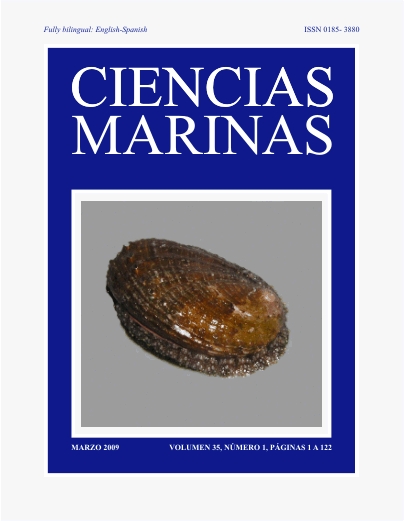Effect of darkness on the early postlarval development of Haliotis corrugata abalone fed different diatom densities
Main Article Content
Abstract
Four-day-old postlarvae of the abalone Haliotis corrugata were exposed to different diatom densities (Navicula incerta, 0 to 8000 cells mm–2) under two illumination conditions: constant light (19–21 µmol quanta m–2 s–1) and darkness. The effect of these two factors on postlarval grazing rate, survival, and growth was evaluated. The experiment was conducted for 14 days in 10-mL sterile wells following a split-plot experimental design with three replicates per treatment. The highest grazing rate was observed in the 2000 cells mm–2 density treatment and it was higher in darkness (196 ± 67 cells pl–1 h–1) than in constant light (139 ± 36 cells pl–1 h–1). Mean survival was also higher in darkness (59%) than under constant light (44%), as was mean growth rate (20 and 14 µm d–1, respectively). Growth rate at the end of the experimental period tended to decrease with the increase in diatom density. Higher grazing and growth rates in darkness reinforce the hypothesis that the nocturnal habits of abalone develop soon after metamorphosis and not at juvenile stages as usually considered.
Downloads
Article Details
This is an open access article distributed under a Creative Commons Attribution 4.0 License, which allows you to share and adapt the work, as long as you give appropriate credit to the original author(s) and the source, provide a link to the Creative Commons license, and indicate if changes were made. Figures, tables and other elements in the article are included in the article’s CC BY 4.0 license, unless otherwise indicated. The journal title is protected by copyrights and not subject to this license. Full license deed can be viewed here.

